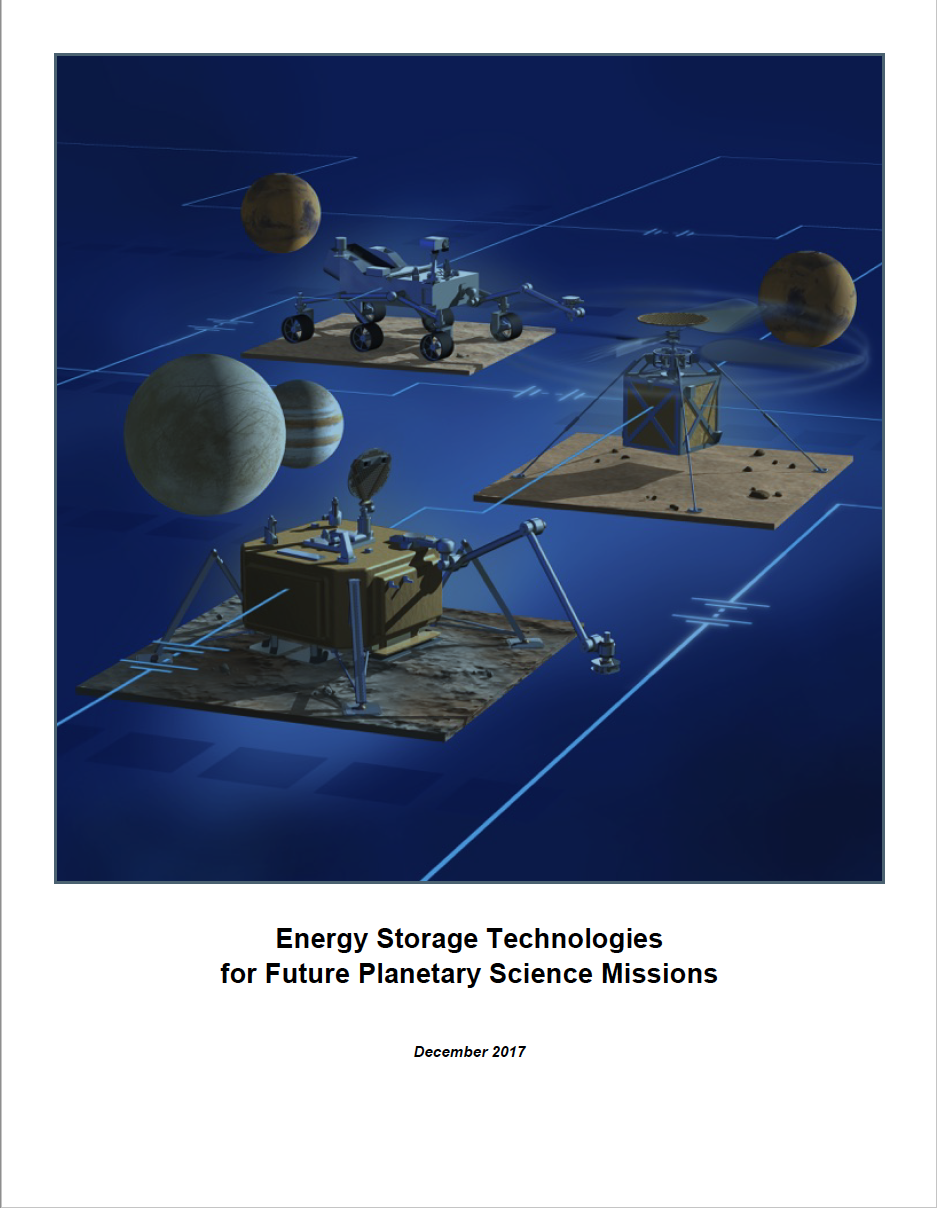Solar Power And Energy Storage For Planetary Missions

Planetary missions high temperature batteries for venus missions non flammable separator electrolyte systems solid state high specific energy high power batteries li air batteries for aircraft applications improved cathode and electrolyte stability in lithium oxygen batteries multi functional load bearing energy storage.
Solar power and energy storage for planetary missions. Energy storage power management and distribution space missions need a variety of power solutions solar power systems nuclear power systems batteries primary and secondary rechargeable fuel cells new technologies thermal 3 propulsion communication 4 8 guidance nav. Improved primary batteries rechargeable batteries and fuel cells with high specific energy and long life capability are needed for. Colonization of the moon is the proposed establishment of a permanent human community or robotic industries on the moon the closest astronomical body to earth. The roadmaps are a set of documents that consider a wide range of needed technologies and development pathways for the next 20 years 2015 2035.
A obtain information about potential next decadal planetary science missions and their energy storage system needs b determine the capabilities of state of practice sop space energy storage systems c assess. The study report is organized into five major sections. Solar power technologies for future planetary science missions report no. Control 8 payload 27 power 28.
1 study overview 2 potential solar power system needs of future planetary science missions 3 capabilities and limitations of state of practice sop space solar power systems 4 status of advanced solar cell and array technologies and 5 findings and recommendations. They provided 6 6 m2 of solar energy to power the stardust spacecraft even when it was nearly three times farther from. Jpl d 101316 december 2017. Higher efficiency and higher specific power solar arrays and radioisotope power systems are desired to provide increased power and mission design flexibility for deep space missions.
Space power and energy storage ta 3 4 draft executive summary this is technology area ta 3. Planetary and space exploration missions space exploration missions may be broadly classified into two categories. The goal of the study was to assess the potential of advanced energy storage technologies to enable and or enhance next decade 2010 2020 nasa space science missions and to define a roadmap for developing advanced energy storage technologies that will enable or enhance future missions. Space power and energy storage one of the 16 sections of the 2015 nasa technology roadmaps.
Discovery of water in the soil at the lunar poles by chandrayaan 1 in 2008 09 renewed interest in the moon after nasa missions in the 1990s suggested the presence of lunar ice locating a colony at one of the lunar poles would also.
















































